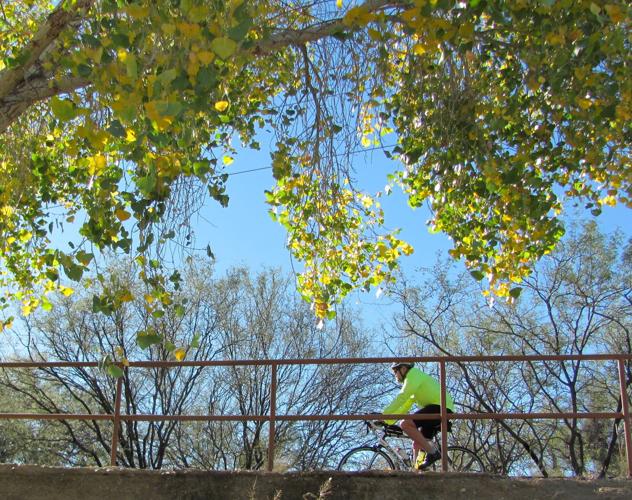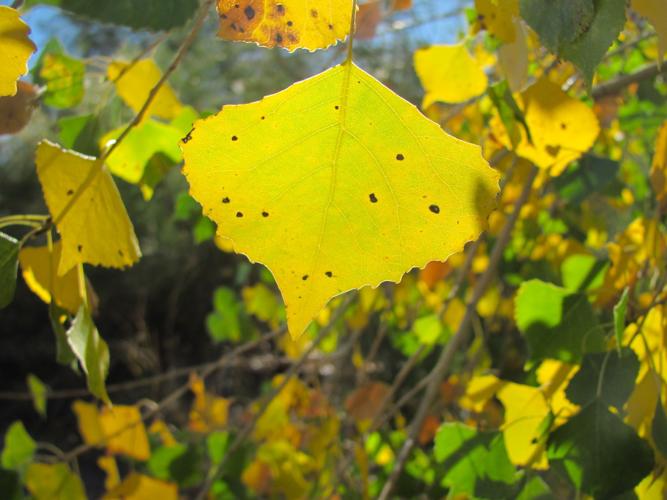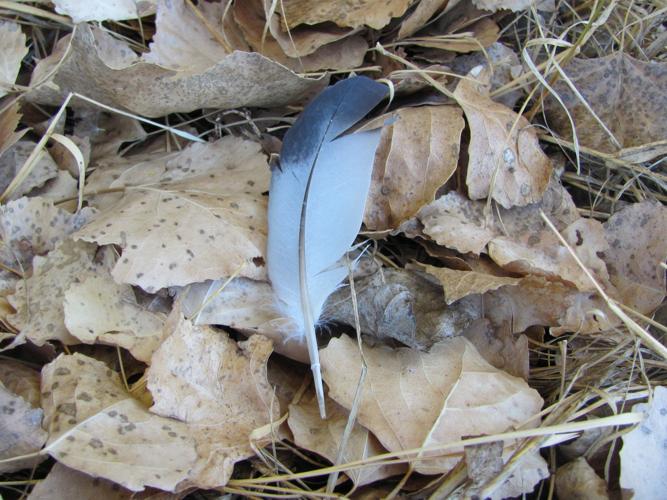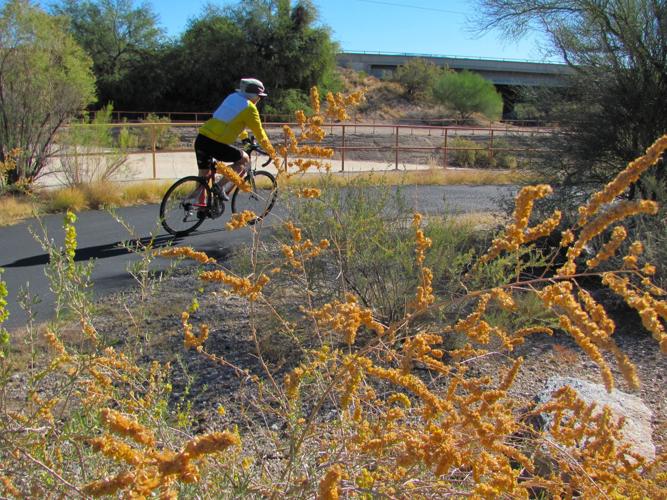Autumn color is bursting forth in dazzling yellow hues along watercourses and in parks around Tucson — well after most autumn leaves have faded in nearby mountain ranges.
Cottonwoods, velvet ash, sycamores and some shrubs often start changing colors in late November. Depending on the weather and the specific section of the wash or river, the color can hang on until late December.
The golden leaves of cottonwood trees play a starring autumn role along parts of watercourses such the Rillito River and Tanque Verde Creek as they wind through the metro area.
Trees of the Fremont cottonwood species, which are native to the Southwest, typically grow near rivers, washes and wetlands. They can reach heights of more than 100 feet and have heart-shaped leaves.
Why do the leaves of cottonwoods change from green to golden yellow so late in the season in the Tucson valley — long after most leaves in the nearby mountains have lost their luster?
Botany experts say it’s because the tree is deciduous and its leaves turn yellow when cooler weather stops chlorophyll production.
While the cottonwoods and other trees put on the most showy color displays, smaller plants also add fall hues along creek and river beds.
Among them are wild cotton, which has an orange and red color, and hackberry, with yellow leaves.
You might spot color along almost any Tucson watercourse in the coming weeks. One place to get a glimpse now is on either side of the Craycroft Road bridge over the Rillito River.








